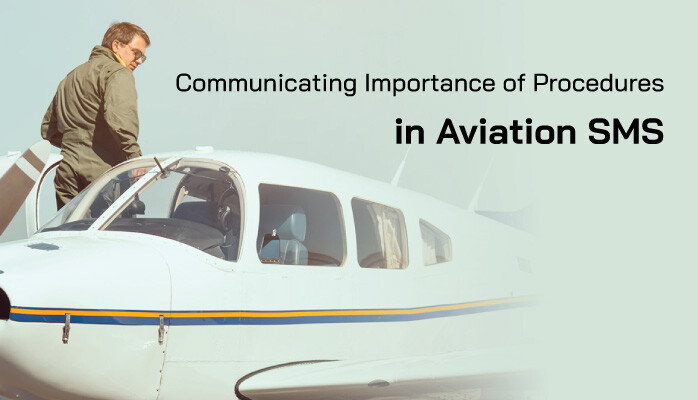Procedures at Heart of Aviation Safety Management

I currently just finished my freshman year at San Diego Christian College (SDCC) enrolled as an aviation major seeking a career in commercial aviation. SDCC employs a third party whom they rent aircraft and employ instructors from.
If I have learned one thing from my first year of training, it is that policies and procedures are everything, that is, they are more important than most people readily consider during everyday flight operations.
Procedures are very important to assure flight risk is managed to as low as reasonably practical. Flight procedures allow me to focus on exactly what I need, even though I may not be considering the reasoning behind a procedure before a particular flight. I know procedures are important for helping me to stay consistent, and safe.
Take-offs and landings, emergencies, and maneuvers, all of which have procedures. Procedures remain at the core of aviation risk management and allow the aviation industry to enjoy continued success.
Related Articles on Aviation SMS Policies and Procedures
- Writing & Reviewing Aviation SMS Safety Policies - 4 Free Templates
- How to Review Your Aviation Safety Risk Management Procedures
- Safety Chart: How to Monitor Aviation SMS' Policies and Procedures?
Safety Procedures Prevent Incidents & Assist With Recovery
Takeoff and landings are the most dangerous part of a flight being so close to the ground with very little time to troubleshoot if an emergency arises. Having the ability to immediately know what it is I have to do when a problem arises will make the difference between being able to fly again.
Procedures do not just help me out of a situation, but also help prevent one.
Repetition Offers Safety Assurance in Flight Operations
When I do something the same way time and time again using a checklist of procedures, I will be able to better recognize something that is not right.
When I start to enter the pattern at an airport the same way every time it allows me to stay ahead of the plane. When I decrease my rpm the same amount every time I am descending, a beam of numbers allows me to set myself up for success.
When I know exactly what altitude and airspeed I am to be at when I turn final, it allows me to recognize sooner when I have not set myself up to succeed and should go around.
When an emergency does arise, having the comfort of knowing exactly what to do is so important. The worst thing that could happen is if I don’t know what to do and start to freeze up.
Being able to stay calm when things get crazy is my job as a pilot and procedures are one of the most important ways I can do that. Checklists are so easy to forget or to think that they are memorized, but if used properly, they will keep me alive as long the process is followed.
Related Articles on Aviation SMS Processes
- What Is the Process of Risk Management in Aviation SMS
- What Are Important Factors of Aviation Risk Management Process
- 4 Critical Elements of the Aviation SMS Risk Management Process
Practice Procedures to Ingrain Training & Inspire Confidence

Routine training maneuvers are so important to manage flight risk. They help to train a pilot to be precise and to recover from dangerous situations.
Enough cannot be said about the consistency that policies and procedures create. Repeating something over and over again is so important to really be able to learn something and to develop reflex actions that can be counted upon in an emergency.
Even more important is being able to do something over and over again in exactly the same way. Knowing that when I enter a steep turn I add 200 rpm and one full stroke of trim in the Cessna 172, which I trained in, allows me to quickly enter the maneuver and hold it, therefore allowing me more time to look outside for traffic and be a tourist.
Repeating the recovery from a stall the same way over and over while at school sharpens my ability to respond in the plane.
Being able to know that as long as I have studied the procedures for the plane I am flying, I will continue to fly safely, is the reason why I say that procedures are one of the best ways to manage risks in flight.
The above article was written by an aviation student. Feel free to use this story in your safety newsletters to communicate the importance of procedures. Every day, we see preventable accidents occur because procedures were:
- Not communicated or taught to employees;
- Not followed; or
- Not supervised to ensure they are followed correctly.
Too often, employees become complacent. Not following procedures is an early warning indicator that a potential problem exists. In these cases, there are a few immediate corrective actions that safety teams can implement:
- Safety promotion activities highlighting the importance of procedures;
- Remedial training; and/or
- Safety surveys that subtly emphasize procedures to determine potential shortcomings.
Safety policies should be reviewed regularly and signed by the accountable executive. Your safety policy helps to demonstrate top management support for your company's aviation safety management system (SMS). In addition, your organization's safety policy should be regularly communicated to consistently strengthen your safety culture.
Last updated March 2025.






